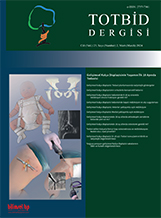
Early diagnosis and treatment are important to achieve good results in the treatment of developmental dysplasia of the hip (DDH). Favorable results can be achieved through brace treatment or reduction (closed or open). However, the effectiveness of the applied treatments should be evaluated both clinically and radiologically. While clinical examination provides valuable information, it is often insufficient to manage the post-treatment evaluation. Ultrasonography (USG) is especially useful in evaluating the hip joint in infants younger than six months and monitoring the hips treated with orthosis. However, its use is limited in older infants or patients who have undergone closed or open reduction. In children older than six months, it is possible to evaluate hip joint morphology with direct radiography. However, in some cases, insufficient information about the reduction quality and ionizing radiation have prompted consideration of more advaced modelities. Currently, advanced imaging methods such as computed tomography (CT) and magnetic resonance imaging (MRI) have gained importance in the follow-up of DDH treatment. With the latest developments in imaging technology, MRI is the preferred modality in the hips with questionable reduction or which need detailed anatomical evaluation, since it does not contain ionizing radiation and provides information about soft tissue. As a result, an appropriate post-treatment approach and proper follow-up of DDH are essential for achieving favorable long-term results.